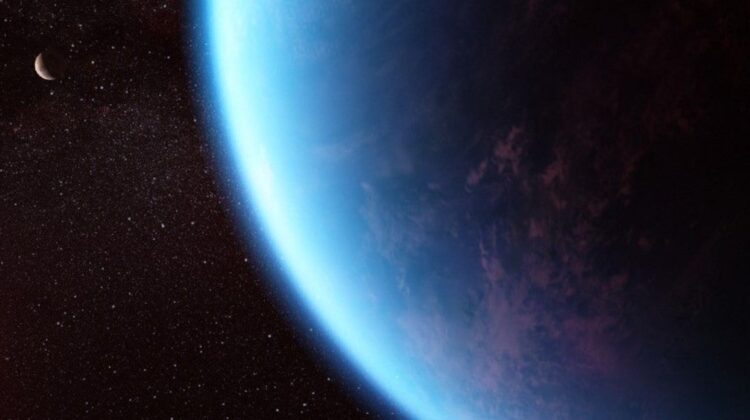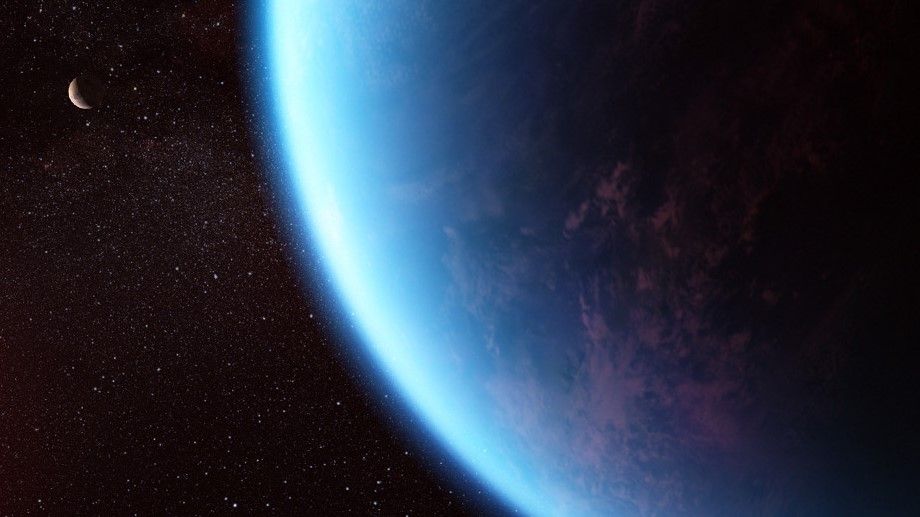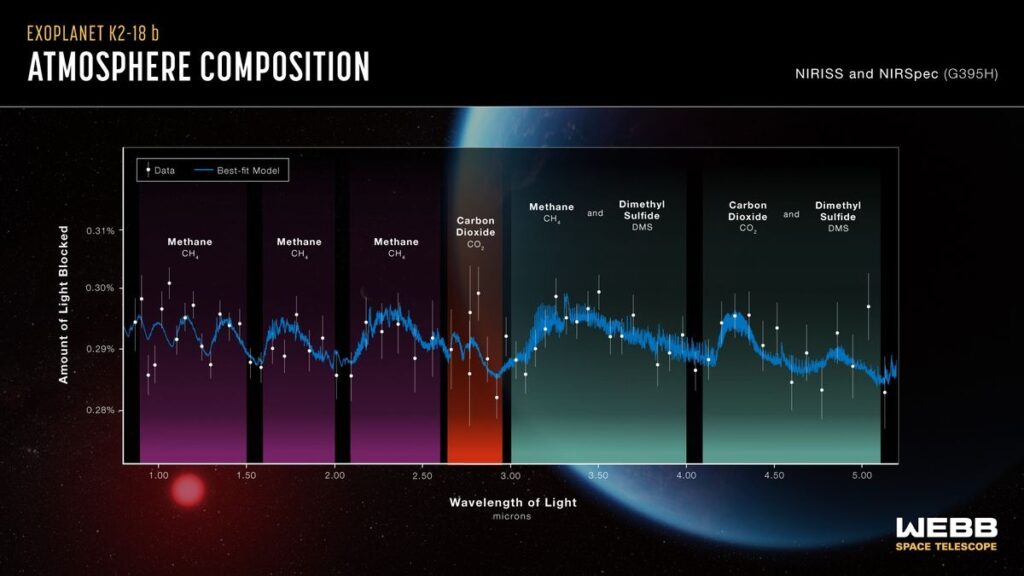
Is This Distant Exoplanet Hiding a Vast Ocean?
The James Webb Space Telescope (JWST) has made a groundbreaking discovery, detecting carbon-based molecules in the atmosphere of an exoplanet that could be covered in vast oceans. K2-18 b, a so-called “Hycean planet,” is located 120 light-years from Earth and may offer new clues in the search for extraterrestrial life.
What is K2-18 b?
K2-18 b is a super-Earth, around 2.6 times the size of our planet and 8.6 times its mass. It orbits a cool red dwarf star within the habitable zone, a region where conditions may allow liquid water to exist—a key ingredient for life.
James Webb’s Stunning Discovery
Using its advanced infrared instruments, JWST detected carbon dioxide (CO₂) and methane (CH₄) in K2-18 b’s atmosphere. The absence of ammonia (NH₃) suggests that an ocean could be hiding beneath a hydrogen-rich atmosphere.

The telescope may have also found traces of dimethyl sulfide (DMS), a molecule that, on Earth, is produced exclusively by living organisms, particularly by marine phytoplankton. While not yet confirmed, this raises an exciting possibility—could K2-18 b harbor alien life?
Why K2-18 b is Different from Other Exoplanets
Unlike Earth-like rocky planets, K2-18 b belongs to a class called sub-Neptunes, which have no direct equivalents in our solar system. Astronomers are still debating the nature of these planets, but Hycean worlds like K2-18 b may have conditions suitable for life.
The Search for Life Beyond Earth
Although the presence of an ocean and organic molecules is intriguing, it does not guarantee that life exists on K2-18 b. The planet’s large size suggests it may have a high-pressure ice interior, similar to Neptune, which could make its oceans too hot for life as we know it.

How James Webb Peered Through the Atmosphere
JWST analyzed K2-18 b’s atmosphere using a method called transit spectroscopy. As the planet passed in front of its star, light filtered through its atmosphere, revealing chemical fingerprints of its composition. The telescope’s superior sensitivity allowed it to gather as much data in one observation as Hubble did in eight.
What’s Next?
The research team plans to use JWST’s Mid-Infrared Instrument (MIRI) to further analyze K2-18 b’s atmospheric composition and confirm the presence of DMS. If verified, this could be the strongest evidence yet of life beyond our solar system.
The discovery of carbon molecules and a possible ocean on K2-18 b is a major leap in exoplanet research. While more data is needed, this exoplanet could be a crucial target in the search for extraterrestrial life.
Stay tuned as the James Webb Space Telescope continues to unveil the secrets of distant worlds!

Leave a Reply